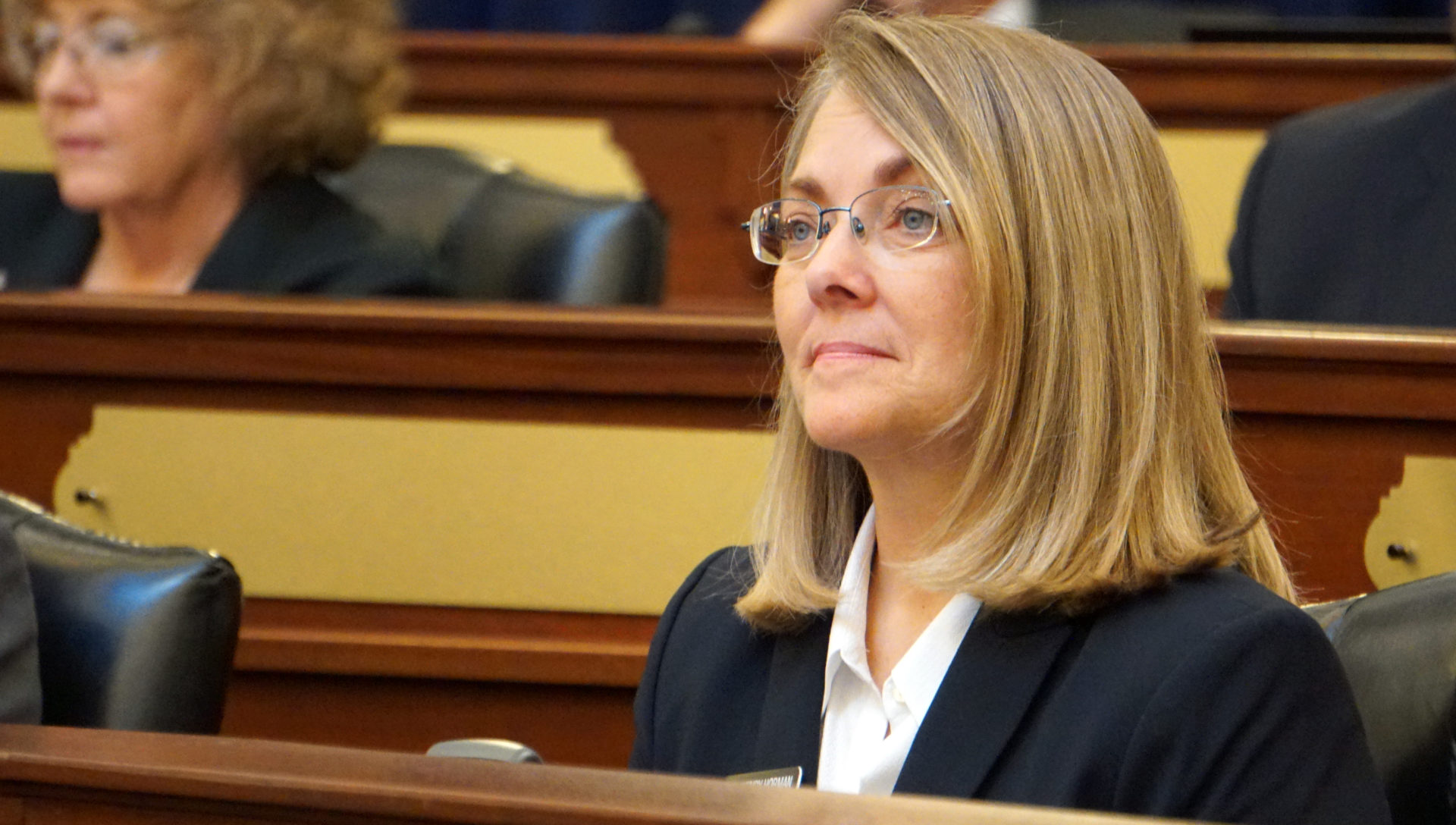After just two years, it is “extremely difficult” to measure the success of Idaho’s literacy initiative.
That’s what Boise State University researchers said in January, in a report requested by legislative budget-writers.
But literacy — and helping at-risk students pick up reading skills by third grade — is new Gov. Brad Little’s top legislative priority. Lawmakers appear to have heard Little loud and clear. They appear poised to double down, building the program’s budget from $13 million to $26 million, at Little’s behest.

If there’s a consensus behind Little’s request, there’s also a consensus behind the reality of the situation. With only 52 percent of the state’s kindergarten through third-grade students reading at grade level last fall, it’s too early to know if a rapidly growing literacy program will change the results.
How we got here
In the fall of 2015, 35,000 of Idaho’s kindergarten through third-grade students showed up with below grade-level reading skills. The problem wasn’t new. The political response was new.
In 2016, then-Gov. Butch Otter and the Legislature agreed on the “literacy initiative.” The idea: Use the reading test scores to drive spending. Schools receive literacy money based on how many at-risk readers they teach, and they’re supposed to use the money to provide 30 to 60 hours of extra help.
The budget has steadily grown, from $11.25 million in 2016-17 to $13 million this year.
If Little gets his way, his $26 million literacy budget would kick in on July 1.
But what are taxpayers getting for their money? That’s one question Boise State University’s Idaho Policy Institute set out to answer.
What the researchers found
Boise State’s researchers endorsed the basic structure of the program — because “it targets resources and intervention directly to the students that need it.” They found that the schools are using most of their money for staffing, so at-risk readers can have more instruction time with teachers or teacher’s aides.
Researchers also found some general trouble spots.
Reading scores drop considerably from kindergarten to first grade, as students make the transition from identifying letters and learning sounds to rudimentary reading. Students in poverty, homeless students and students with limited English skills tend to lag behind their classmates. Schools with more ethnic and racial diversity tend to post lower scores than more homogeneous schools.
But researchers went out of their way not to grade the literacy program — and suggested the grade would be “incomplete.”
“With only two complete years of data from the program, it is extremely difficult to evaluate its effectiveness,” they wrote.
To further complicate matters, the state changed its assessment along the way. The new version of the Idaho Reading Indicator is designed to provide teachers more detailed data about students’ strengths and weaknesses. But the new test went statewide only last fall, and the State Department of Education says it is impossible to compare results from the new screener with its simpler predecessor.
Boise State researchers say they will need “several years” of data from the new IRI before they can evaluate the program fully.
The governor’s perspective
During an Idaho Press Club question-and-answer session Wednesday, Little dismissed a question about the gaps in data.
“That’s fake news,” he said in response to a question from Idaho Education News.

Through spokeswoman Marissa Morrison, Little later said he meant no ill will, and said his remark was a joking reference to the data. And in an interview with Idaho Education News later Wednesday morning, Little education adviser Greg Wilson discussed the Boise State study in greater detail.
Little agrees that it’s too early to draw conclusions about the literacy initiative, Wilson said, but the governor is encouraged. The schools that tested the new IRI in 2017-18 are impressed. Little likes what he is seeing in the classrooms. And he’s glad to see the bulk of the new state money going into staffing.
“I think everyone agrees you need that human touch in literacy intervention,” Wilson said. “More individualized instruction is definitely a positive.”
The dropoff from kindergarten to first grade is a concern, but Wilson also pointed to an encouraging trend. Scores improved from second grade to third grade. And third grade is a pivotal mile marker — that point in the grade school years that students go from learning to read to reading to learn.
Little wrote up his budget — including the proposed spending increase — before Boise State released its study. But he saw nothing that made him rethink his plans. “There were no show-stoppers in this report,” Wilson said.
As Little discussed the topic with reporters Wednesday morning, he painted literacy as a core issue. “To me, if we spend half the budget on public education, if you don’t have kids reading proficiently at the end of third grade, what the hell are you doing with the rest of the money?”
Where we go from here
On Monday morning, the Legislature’s Joint Finance-Appropriations Committee met to divvy up that half of the state budget. The K-12 spending plan, endorsed unanimously, would add $13 million in literacy funding.
The funding isn’t a done deal. All seven K-12 budgets still need to pass the House and the Senate. It’s not unprecedented for budgets to die in a floor vote, but it is rare.
JFAC’s support was conditional.

JFAC requested another study of the literacy initiative, a followup to Boise State’s report. This study would be due Feb. 1, before the committee writes up the 2020-21 budget.
And that’s one reason budget-writers wanted to support Little’s request, Rep. Wendy Horman said before Monday’s vote. Her fellow committee members wanted more data.
“I like to see solid longitudinal data, which to me is a minimum of three years,” said Horman, an Idaho Falls Republican who plays a central role in writing the K-12 budget bills. “I think it’s too early to draw a conclusion.”
